How to add a password to a compressed file?
php editor Xigua teaches you how to add a password to a compressed file in a volume. Keeping your files secure is crucial, and adding a password can effectively prevent unauthorized access to your files. When compressing files, select volume compression options and set a password to ensure each volume is protected. In this way, even if one of the volumes is leaked, the file contents cannot be easily decompressed. By following the simple steps below, you can easily add passwords to compressed files in separate volumes to improve file security.
If the file still needs to be kept confidential, how to set volumes when compressing the file and set password protection at the same time? The editor below will give you an example to see how to operate. Friends who are unclear can refer to it.
First, we need to download and install decompression software, such as WinRAR or 7-Zip software.
 .
.
If you are using WinRAR software, first use the mouse to select the file or folder that needs to be compressed, and then click the mouse to find "Add to compressed file" in the WinRAR list;
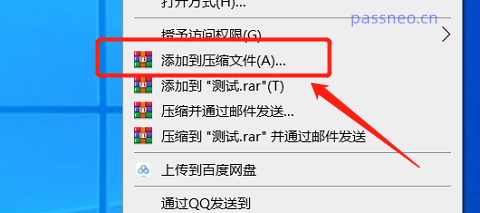 .
.
After the [Compressed file name and parameters] page appears → click the "General" option → click "Browse" to set the saving path of the divided files → click "Cut into volumes, size" to set the size of each divided file Size → Click "Set Password" to start setting password protection. Of course, you can also select the compressed file format, compression method and other options as needed.
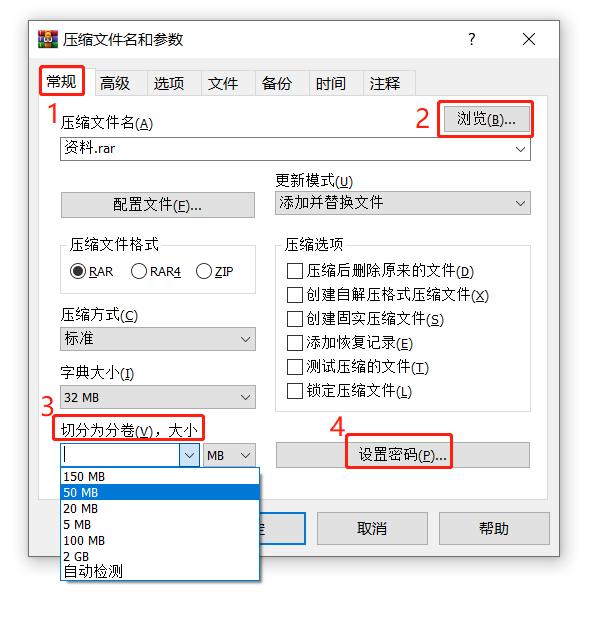 .
.
After clicking "Set Password", the [Enter Password] interface will appear. Enter the password you want to set in the blank column, and then click "OK";
 .
.
Click "OK" to return to the previous interface, then click "OK" to start compressing the volume files and set the password.
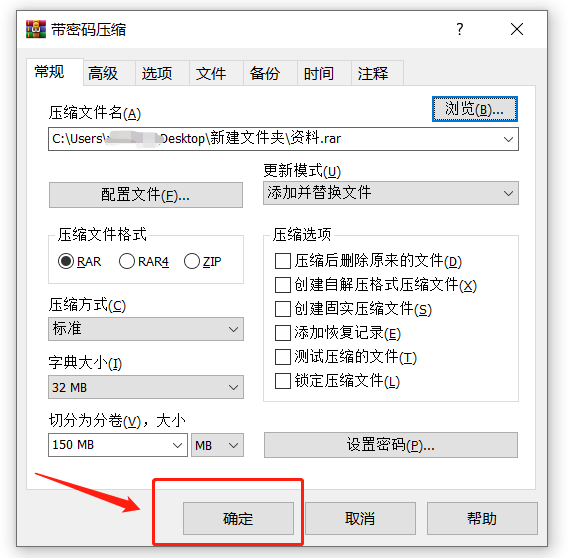 .
.
If you are using 7-Zip decompression software, similarly, first use the mouse to select the files that need to be compressed into volumes, then right-click the mouse to find "Add to compressed package" in the 7-Zip list;
 .
.
After the "Add to Compressed Package" page appears, click the [···] icon to select the saving path of the divided files, click "Volume Size, Bytes" to set the size of each volume, and then click on " Enter the password you want to set in the "Encryption" area, and you can also set other parameters as needed, such as compression format, compression level, etc.
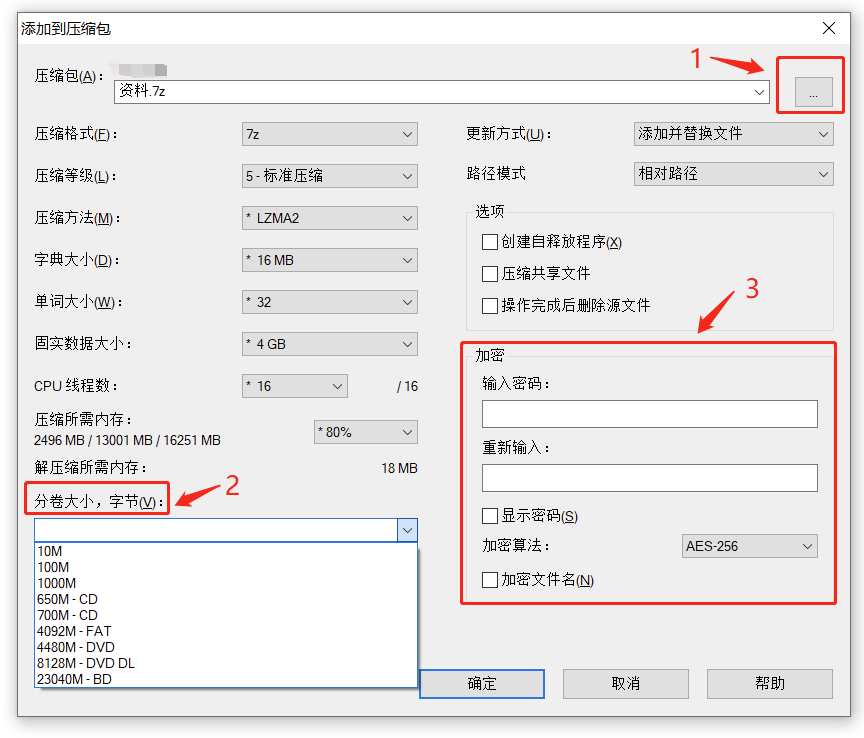 .
.
After the settings are completed, click "OK" to start compressing the volume files, and set the password at the same time.
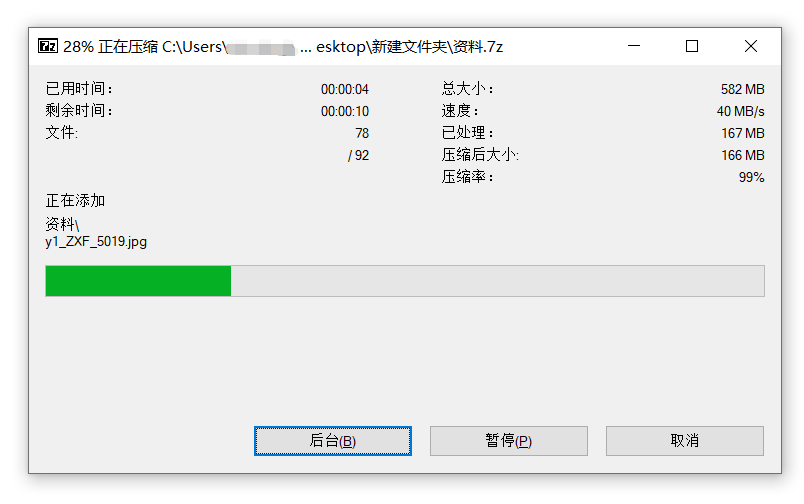 .
.
After setting a password for a compressed file in a volume, if you click on any file in the volume, a dialog box will pop up prompting you to enter the password before you can open it.
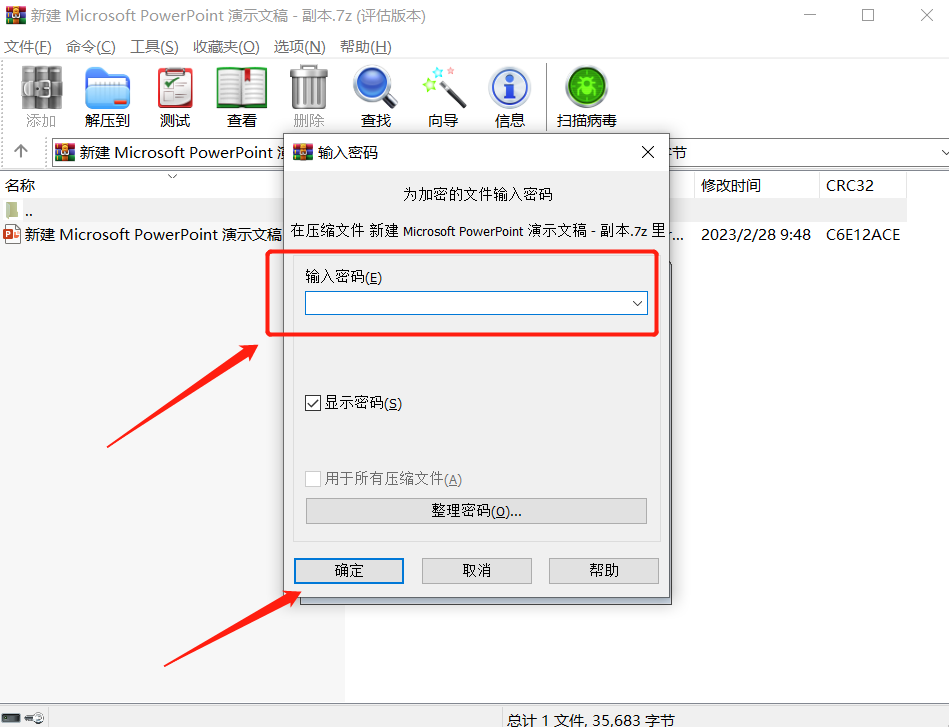 .
.
To decompress the volume files, you only need to decompress the first file and enter the password at the same time to decompress successfully.
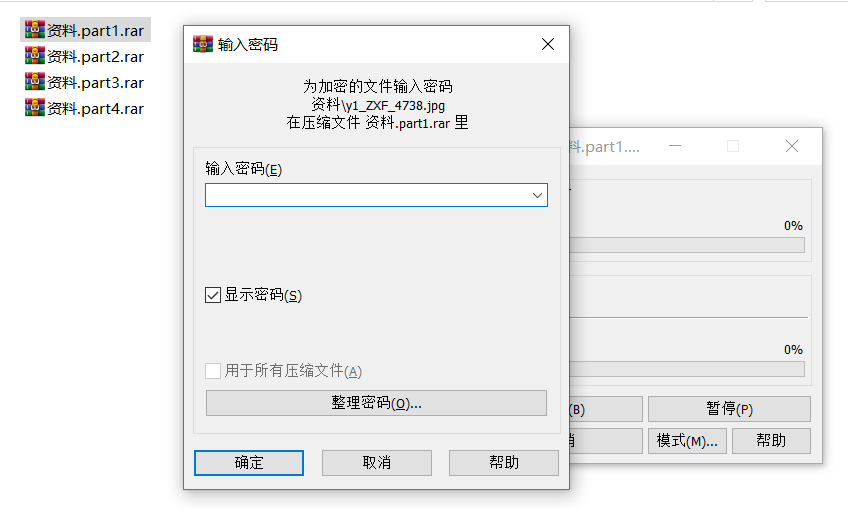
.
It should be reminded that after setting the password for the volume compressed file, remember to remember or save it, because whether it is WinRAR, 7-Zip, or other decompression software, it cannot be used without entering the password. Open or unzip the compressed file.
If you really accidentally forget your password, you may be able to use other tools to help you solve the problem.
Take the Pepsi Niu compressed file password recovery tool as an example. can not only help us retrieve the password of the compressed file, but also retrieve the password of the compressed file .
There are different tools for different compressed file formats. If it is in RAR format, you can directly import the first file in the RAR volume compressed file into the Pepsi Niu RAR password recovery tool as shown below, that is File password can be retrieved.
Tool link: Pepsi Niu RAR password recovery tool
.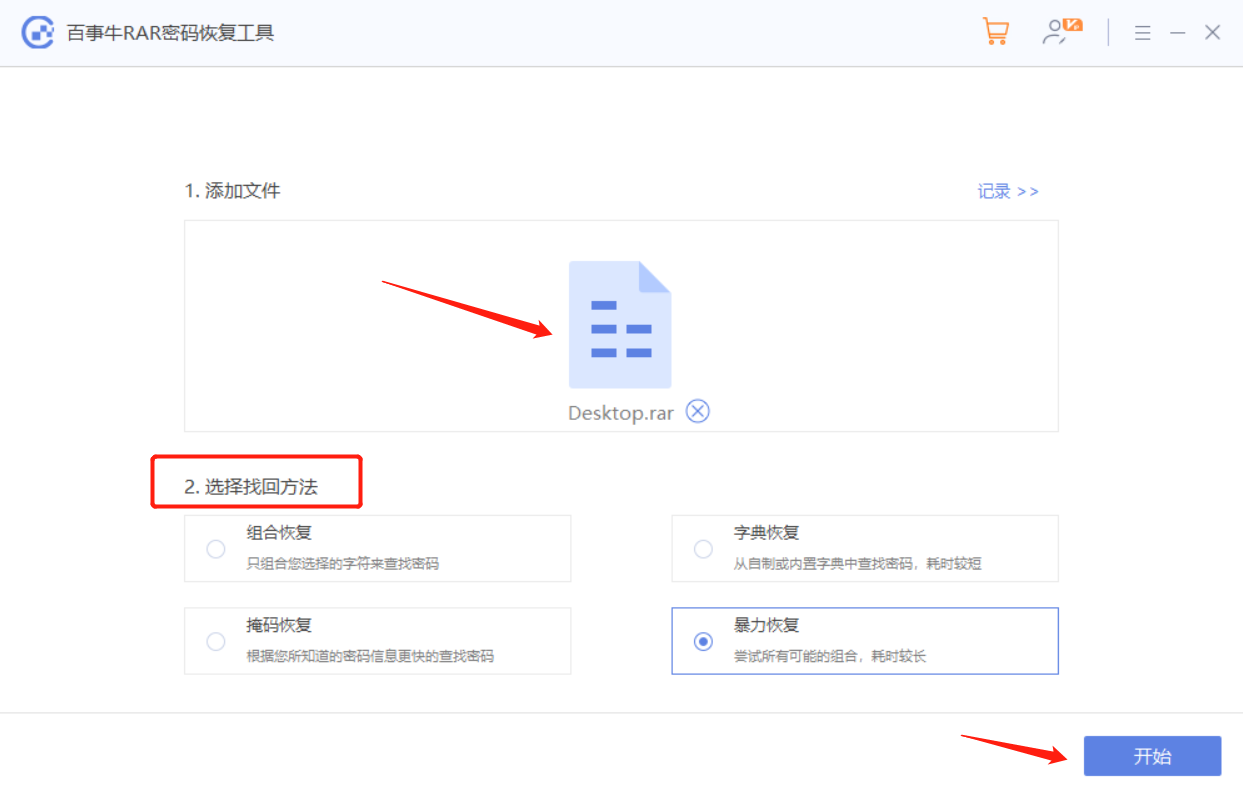
you need to merge the volume files into one file, and then import the Pepsi Niu ZIP password recovery tool as shown below to retrieve the password.
Tool link: Pepsi Niu ZIP password recovery tool
The above is the detailed content of How to add a password to a compressed file?. For more information, please follow other related articles on the PHP Chinese website!

Hot AI Tools

Undresser.AI Undress
AI-powered app for creating realistic nude photos

AI Clothes Remover
Online AI tool for removing clothes from photos.

Undress AI Tool
Undress images for free

Clothoff.io
AI clothes remover

Video Face Swap
Swap faces in any video effortlessly with our completely free AI face swap tool!

Hot Article

Hot Tools

Notepad++7.3.1
Easy-to-use and free code editor

SublimeText3 Chinese version
Chinese version, very easy to use

Zend Studio 13.0.1
Powerful PHP integrated development environment

Dreamweaver CS6
Visual web development tools

SublimeText3 Mac version
God-level code editing software (SublimeText3)

Hot Topics
 How to Create a Timeline Filter in Excel
Apr 03, 2025 am 03:51 AM
How to Create a Timeline Filter in Excel
Apr 03, 2025 am 03:51 AM
In Excel, using the timeline filter can display data by time period more efficiently, which is more convenient than using the filter button. The Timeline is a dynamic filtering option that allows you to quickly display data for a single date, month, quarter, or year. Step 1: Convert data to pivot table First, convert the original Excel data into a pivot table. Select any cell in the data table (formatted or not) and click PivotTable on the Insert tab of the ribbon. Related: How to Create Pivot Tables in Microsoft Excel Don't be intimidated by the pivot table! We will teach you basic skills that you can master in minutes. Related Articles In the dialog box, make sure the entire data range is selected (
 You Need to Know What the Hash Sign Does in Excel Formulas
Apr 08, 2025 am 12:55 AM
You Need to Know What the Hash Sign Does in Excel Formulas
Apr 08, 2025 am 12:55 AM
Excel Overflow Range Operator (#) enables formulas to be automatically adjusted to accommodate changes in overflow range size. This feature is only available for Microsoft 365 Excel for Windows or Mac. Common functions such as UNIQUE, COUNTIF, and SORTBY can be used in conjunction with overflow range operators to generate dynamic sortable lists. The pound sign (#) in the Excel formula is also called the overflow range operator, which instructs the program to consider all results in the overflow range. Therefore, even if the overflow range increases or decreases, the formula containing # will automatically reflect this change. How to list and sort unique values in Microsoft Excel
 Use the PERCENTOF Function to Simplify Percentage Calculations in Excel
Mar 27, 2025 am 03:03 AM
Use the PERCENTOF Function to Simplify Percentage Calculations in Excel
Mar 27, 2025 am 03:03 AM
Excel's PERCENTOF function: Easily calculate the proportion of data subsets Excel's PERCENTOF function can quickly calculate the proportion of data subsets in the entire data set, avoiding the hassle of creating complex formulas. PERCENTOF function syntax The PERCENTOF function has two parameters: =PERCENTOF(a,b) in: a (required) is a subset of data that forms part of the entire data set; b (required) is the entire dataset. In other words, the PERCENTOF function calculates the percentage of the subset a to the total dataset b. Calculate the proportion of individual values using PERCENTOF The easiest way to use the PERCENTOF function is to calculate the single
 If You Don't Rename Tables in Excel, Today's the Day to Start
Apr 15, 2025 am 12:58 AM
If You Don't Rename Tables in Excel, Today's the Day to Start
Apr 15, 2025 am 12:58 AM
Quick link Why should tables be named in Excel How to name a table in Excel Excel table naming rules and techniques By default, tables in Excel are named Table1, Table2, Table3, and so on. However, you don't have to stick to these tags. In fact, it would be better if you don't! In this quick guide, I will explain why you should always rename tables in Excel and show you how to do this. Why should tables be named in Excel While it may take some time to develop the habit of naming tables in Excel (if you don't usually do this), the following reasons illustrate today
 How to Format a Spilled Array in Excel
Apr 10, 2025 pm 12:01 PM
How to Format a Spilled Array in Excel
Apr 10, 2025 pm 12:01 PM
Use formula conditional formatting to handle overflow arrays in Excel Direct formatting of overflow arrays in Excel can cause problems, especially when the data shape or size changes. Formula-based conditional formatting rules allow automatic formatting to be adjusted when data parameters change. Adding a dollar sign ($) before a column reference applies a rule to all rows in the data. In Excel, you can apply direct formatting to the values or background of a cell to make the spreadsheet easier to read. However, when an Excel formula returns a set of values (called overflow arrays), applying direct formatting will cause problems if the size or shape of the data changes. Suppose you have this spreadsheet with overflow results from the PIVOTBY formula,
 Excel MATCH function with formula examples
Apr 15, 2025 am 11:21 AM
Excel MATCH function with formula examples
Apr 15, 2025 am 11:21 AM
This tutorial explains how to use MATCH function in Excel with formula examples. It also shows how to improve your lookup formulas by a making dynamic formula with VLOOKUP and MATCH. In Microsoft Excel, there are many different lookup/ref
 How to Use Excel's AGGREGATE Function to Refine Calculations
Apr 12, 2025 am 12:54 AM
How to Use Excel's AGGREGATE Function to Refine Calculations
Apr 12, 2025 am 12:54 AM
Quick Links The AGGREGATE Syntax







